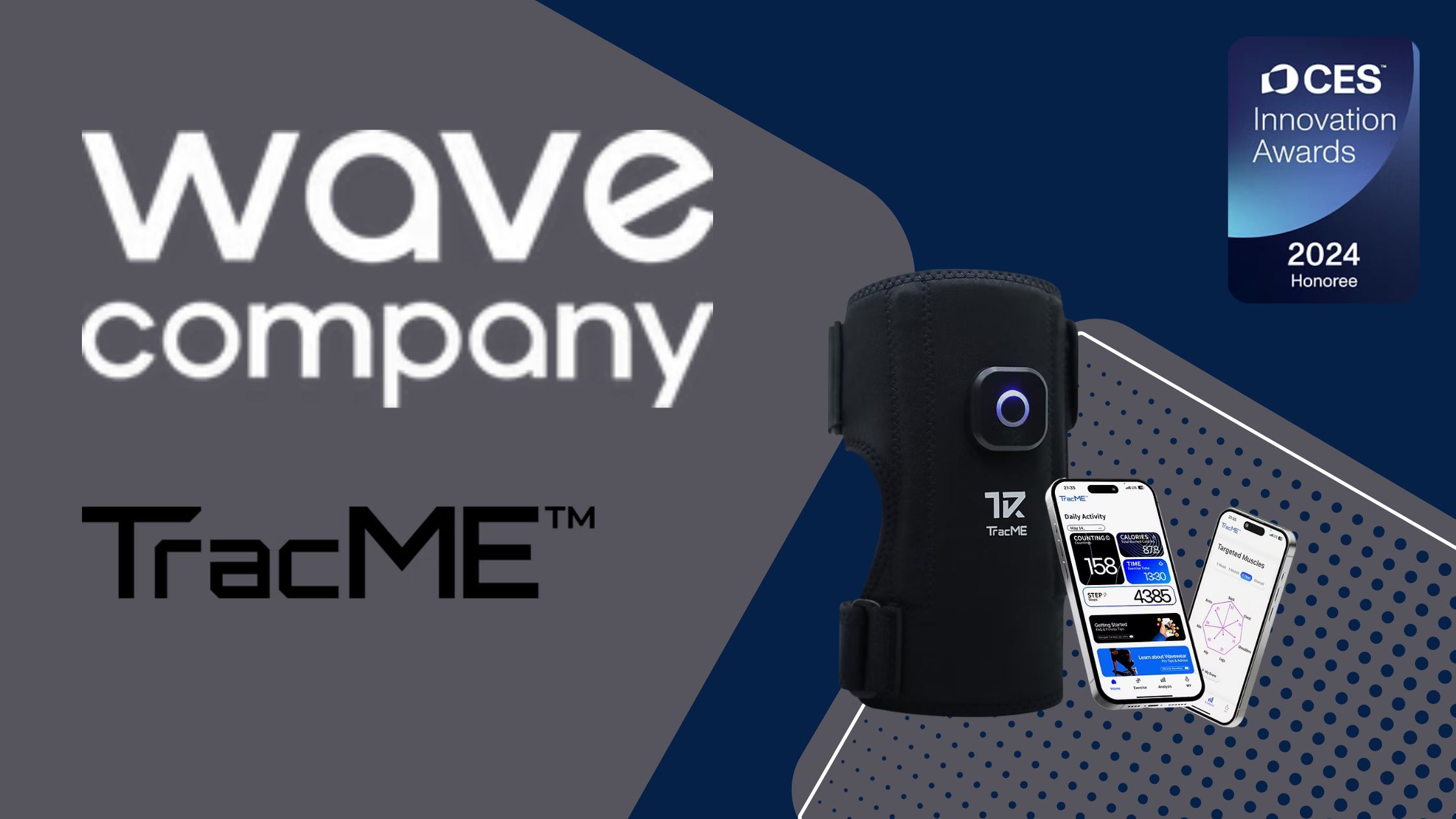AsiaTechDaily – Asia's Leading Tech and Startup Media Platform

Wave Company’s TracMe: Interviewing the Innovators Behind CES 2024’s Award-Winning Wearable
TracMe, the wearable technology developed by Wave Company, has garnered international recognition by winning the prestigious Innovation Award in the Digital Health category at CES 2024. This accolade highlights TracMe’s unique advancements in technology and design, standing out for its engineering excellence, functionality, and originality.
With stretchable silicone sensors that collect precise real-time data without hindering movement, coupled with AI-powered personalized feedback, TracMe redefines the user experience. Its ultra-thin, user-friendly design and organized workout management system mark a transformative leap beyond traditional fitness devices, cementing its position as a leader in the digital health landscape.
AsiaTechDaily recently had the opportunity to interview Wave Company’s team to delve deeper into their journey and learn more about their latest milestones and innovations. From the development of TracSil’s cutting-edge textile sensors to the global expansion of TracMe since its spotlight moment at CES 2024, the team shared insights into their progress, future plans, and how they aim to revolutionize healthcare and wearable technology.
Q2: Congratulations on the win! How did TracMe’s features, pricing, and user experience compare to the competition to win the award?
TracMe clearly differentiates itself from the competition with a unique approach that is different from traditional smartwatches and exercise apps. While smartwatches primarily leverage GPS to capture outdoor aerobic exercise data, TracMe specializes in precisely measuring anaerobic exercise data, such as bodyweight exercises, dumbbell lifts, and squats, through sensors in a brace worn over the joints. For example, it automatically stops counting and provides instant feedback if the user fails to maintain proper form, ensuring that the workout is both accurate and safe.
TracMe isn’t just an app that records data; it automatically records your workout data through your wearable device and analyzes it with AI to recommend personalized workout routines. These features provide clear guidelines for beginners, while advanced users can get expert feedback and efficient workout plans. In the future, TracMe will also integrate with existing healthcare platforms such as Apple Health and Samsung Health to provide an expanded experience, showing that TracMe is growing into an integrated healthcare platform rather than just a workout tool.
Q3: What key strengths of TracMe were highlighted by CES judges or during presentations?
While we weren’t able to get direct feedback from the CES judges, the key strengths that TracMe emphasized during its pitch were its user-friendly design and the scalability of the technology. TracMe automatically records data by simply wearing it, and users can view their workout data at a glance through the app, giving them expert-level feedback without the need for complicated setup. This ease of use helps users become more organized in their workouts.
AI-powered real-time feedback is also a differentiating feature of TracMe, allowing users to receive recommendations for their next workout based on their workout routine and data, as well as posture correction feedback in real-time. Unlike traditional fitness tools, this allows for accurate data and personalized coaching. TracMe can also be used for home fitness and sports data analysis, with future plans to expand its capabilities by integrating with smartwatches and sports science databases.
Ultimately, TracMe was honored with the CES Innovation Award for its potential to revolutionize the personal fitness experience. The product is more than just a technological innovation; it’s focused on helping users have a healthier, smarter workout experience.
Q4: What is Wave Company’s go-to-market strategy for TracMe in the US? Are there any local partnerships or collaborations planned?
A company on the East Coast of the United States, who we met at Medica last October and purchased our product, was very impressed with the product and believes that it has great potential to succeed in the US market, and is currently in talks to distribute Wave Company’s product in the US. Currently, they are discussing Wave Wear’s clinical studies, technical data, pricing, MOQ, etc., and are very interested in our smart suit, TracMe, strain sensor technology TracSil, and EMS sensor ElecSil.
Q5: Are there plans to sell TracMe through major retail channels such as Amazon, Best Buy, or Target?
Currently, we do not have a specific timeline, but we are considering selling our products in Lotte Hi-Mart, one of the largest electronics distribution channels in Korea, hypermarkets specializing in electronics such as Best Buy, daily necessities online and offline channels such as Target, and Amazon, the world’s largest online marketplace.
Q6: What is the estimated retail price and release date for TracMe in the US?
We expect the retail price to be around 200 USD, including the app service, protector, device, and charging port, and we are currently negotiating with interested buyers for a specific launch date.
Q7: How does TracSil differ technically from traditional IMU or visual sensors?
Visual sensors can fail to recognize invisible areas, whereas TracSil’s ability to measure strain in materials means there are no blind spots.
TracSil measures the change in DC voltage from the battery due to the change in resistance of the coating sensor with an ADC circuit embedded in the MCU chip, so compared to IMU sensors, the circuit is simple and the data is simple to measure. Therefore, the price is competitive.
In order to recognize joint bending, only one strain sensor is required, but IMU sensors contain 2-3 sensors such as gyro sensors, acceleration sensors, and geomagnetic sensors to compensate for errors in various movement situations, as well as temperature sensors to compensate for errors, making the data processing complex and costly. If TracSil can be advanced to provide more sensitive angle measurements, we believe that TracSil can gradually replace IMU sensors due to its competitive price.
Q8: How does TracMe’s silicone textile process reduce costs and improve manufacturing compared to traditional wearables?
We are able to maintain a lower unit cost than other companies because we developed the sensor in-house, and we improved the sensitivity by utilizing a silicone rubber-based sensor pattern and a stretch reduction member to improve measurement accuracy. We can measure real-time whole-body movement through articulation, and unlike IMU sensors, the production process is simple because the sensor is attached to the garment using a screen method, and we have confirmed that it is still usable after 10,000 stretch tests.
Q9: Does TracMe or TracSil provide an open API or plan to build a developer-friendly ecosystem?
We do not provide an open API yet and have no plans to do so in the near future, but it is expected to be considered at a later stage when the service is widely used and it is necessary to build a developer-friendly ecosystem as a platform.
Q10: Can you provide an example of how TracMe’s AI algorithms analyze and utilize exercise data?
TracMe was developed using generative AI with a system structure called Retrieval-Augmented Generation (RAG), which is being used in chatbots utilizing LLM as a way to drive natural conversations with customers.
Q11: How is the training data for TracMe’s AI-powered personalized coaching updated to enhance accuracy?
We’re aggregating a variety of data, including customer workout statistics, today’s workout data, and customer preferences, to help LLM make more accurate personalized recommendations.



